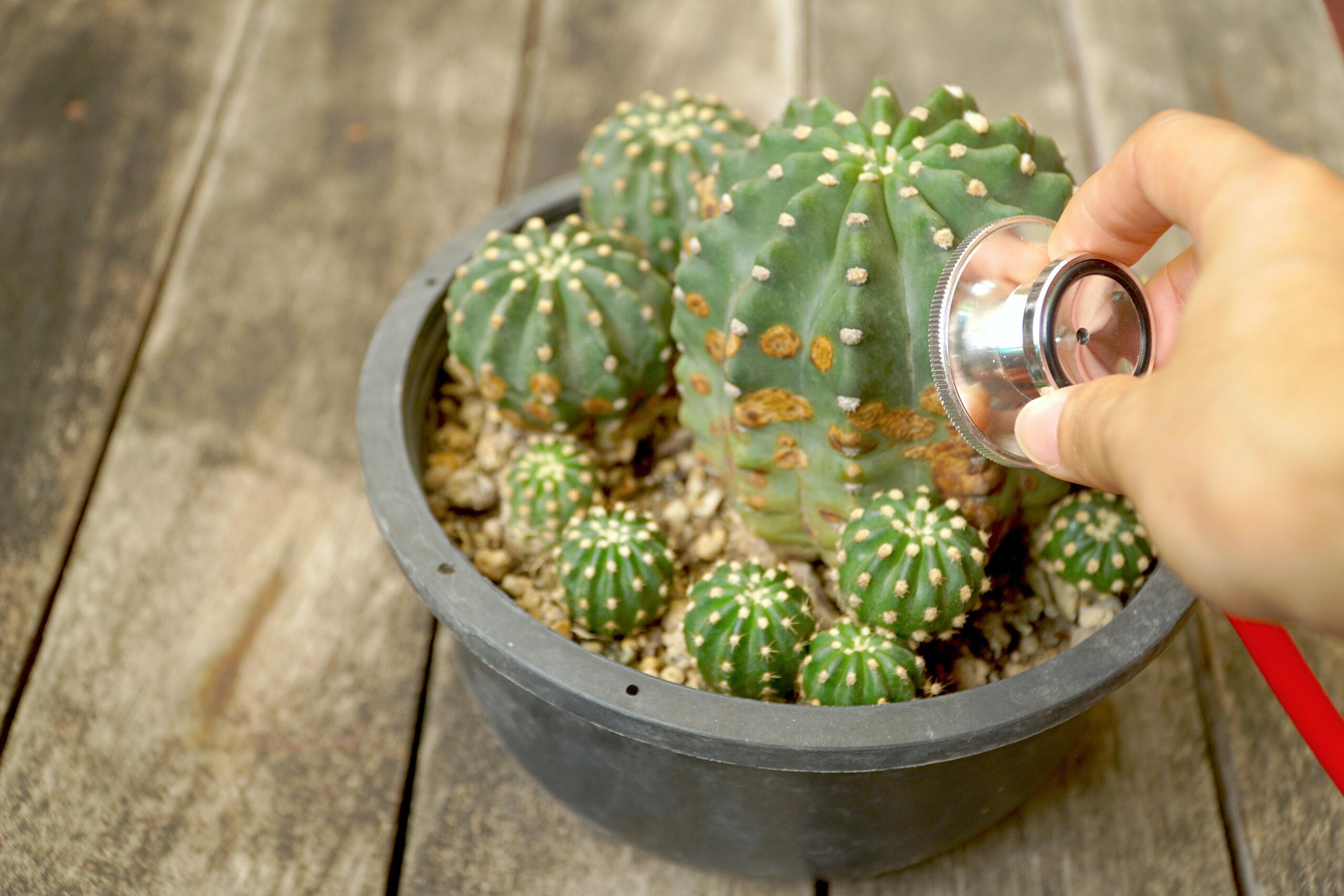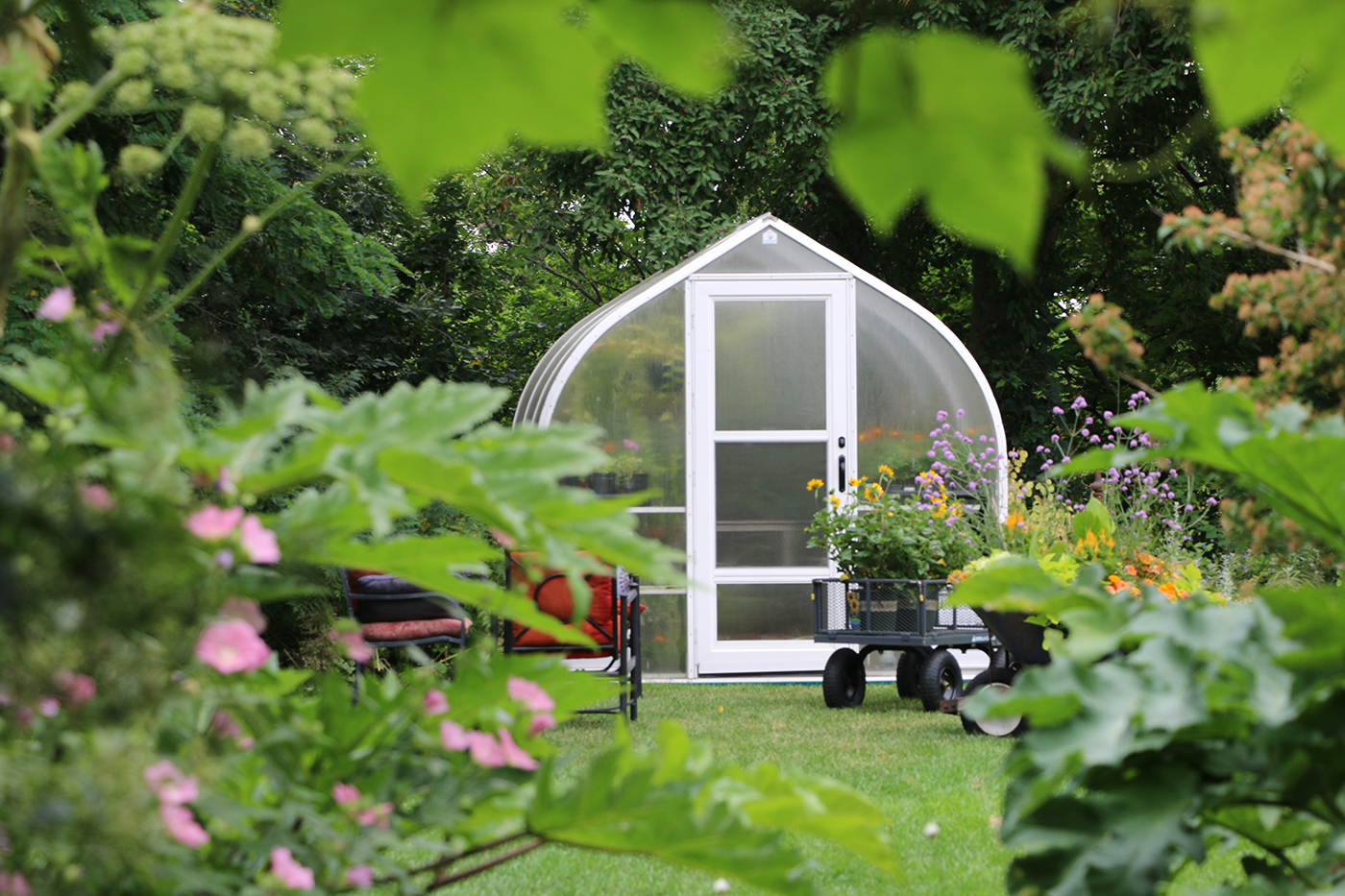Okay, for the record, we can’t actually make our succulents “happy.” That’s a people thing, though a lot of us do assign human emotions to the plants we love. But we can make ourselves happy by keeping these remarkable plants healthy, and knowing how to spot the first signs of insects or disease. Let’s take a look at a few ways we can be the best succulent plant parents possible.
Learning to “love” our succulents a little bit less
It’s the good news and the bad news. We love our succulents…. but we can easily love them to death by watering them like regular houseplants. Bad idea!
Succulents hold water in their leaves and stems, and sometimes their roots. Mother Nature has designed most of them to thrive in challenging settings where dry spells are interspersed with occasional downpours. Watering succulents too often, before their soil has had a chance to dry down significantly, can easily trigger different types of rot. It’s just too much moisture and not enough air around the plants’ root system or crown, where the stem meets the soil.
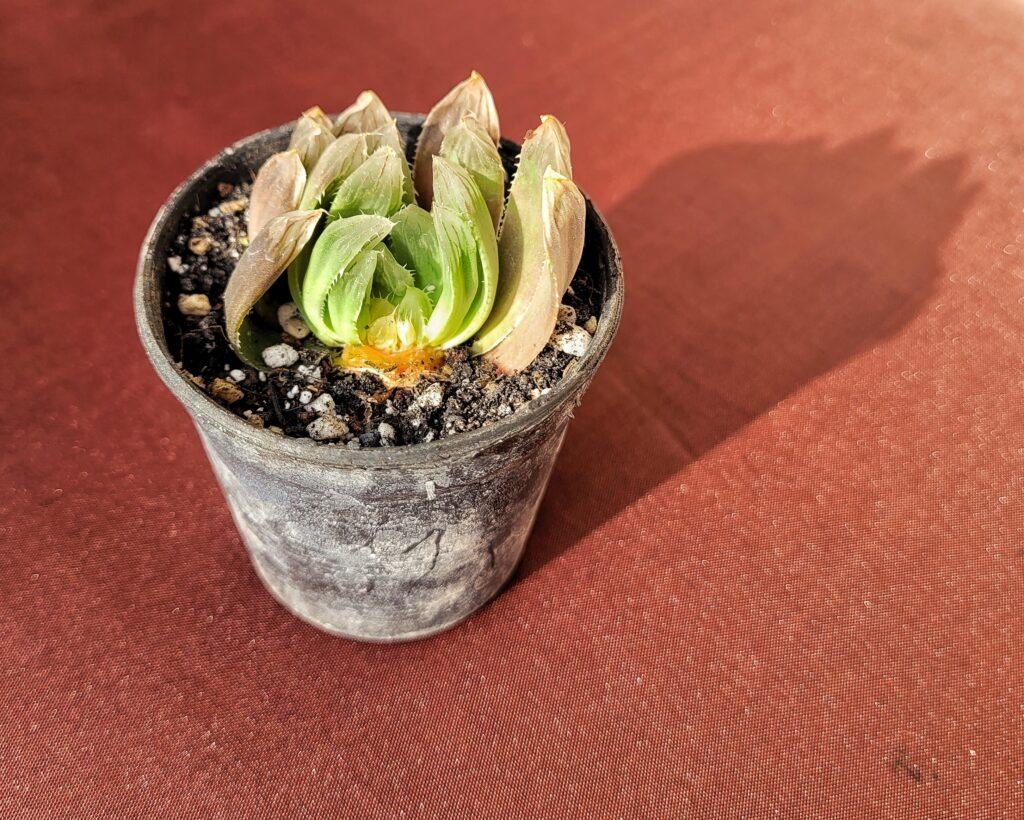
Most likely, the problems with the haworthia pictured above started with over-watering. The roots stayed too wet and began to turn black and mushy. It wouldn’t take long for the infection to move up into the top growth and affect the rest of the plant.
What should we do when rot appears?
It depends on how seriously the plant is affected. The succulent shown above is probably a lost cause. Since the very center of the plant looks like rot has already settled in, the haworthia and its soil should most likely be tossed and the pot disinfected before it’s used again.
But what if the condition is caught early and a good portion of the plant – the leaves, stems or overall top growth – still has enough healthy tissue to salvage? Then consider using a clean and very sharp knife to cut away the infected areas. Let those fresh cuts callus or seal over for a few days. Plants with even a small but healthy root system can be repotted. If the plants have some healthy top growth – such as sections of the leafless stem, individual leaves, or the crown itself – they can be left to callus, then set on top of well-draining soil kept very slightly moist until new growth appears.
Once the salvaged plant is ready for potting up, resist the urge to water it until it begins to show the very earliest signs of puckering, indicating it’s actually ready for a drink. Thorough but infrequent watering, gritty and free-draining soil, and a pot with good drainage can prevent a lot of succulent rot problems before they begin.
And was about those bugs?
Oh ya, the critters. One succulent-loving insect immediately comes to mind: mealybugs. Even careful succulent growers will occasionally be visited by these cottony, sap-sucking invaders.
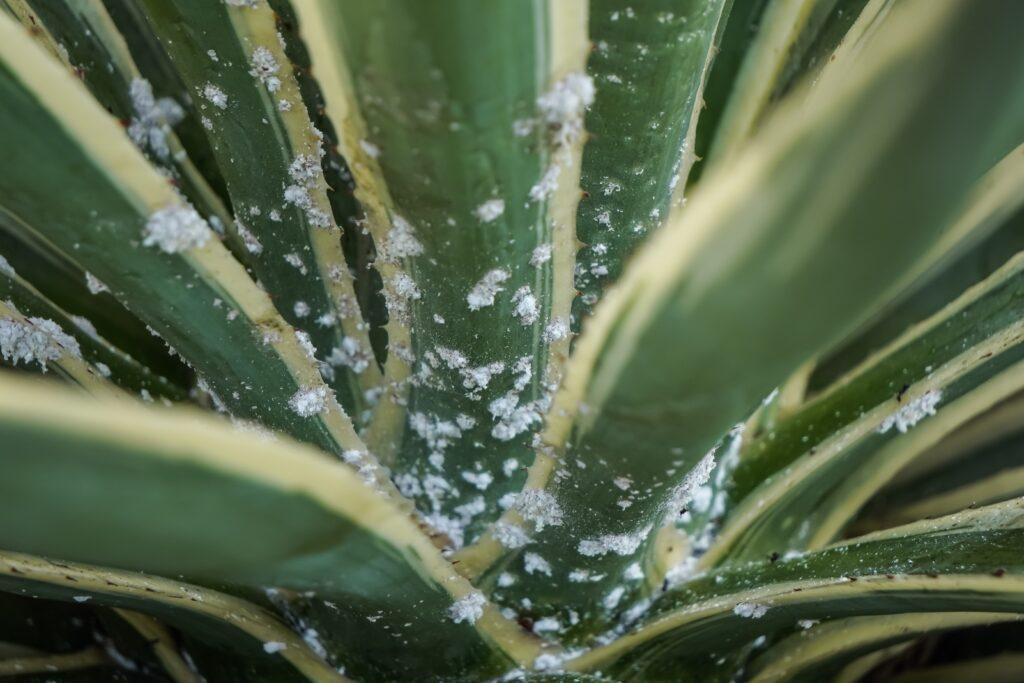
Mealybugs are clever. (Ooops! There I go again assigning human traits where they just don’t belong.) Let’s just say they’re especially frustrating for those of us who love plants. Mealybugs look like very tiny dots of cotton. The white fluffy bits are a mealybugs’ defense, a waxy coating they create that protects the insect inside.
Mealybugs can be hard to spot in the beginning, but ideally, that’s when they need to be stopped. Left unnoticed, they can multiply quickly and create a serious infestation like the one pictured above on an agave. At that stage, they’re especially difficult to eliminate.
Tools for fighting back
Shane, Tagawa’s Houseplant Supervisor, says his go-to for mealybugs is insecticidal soap, used according to package directions.
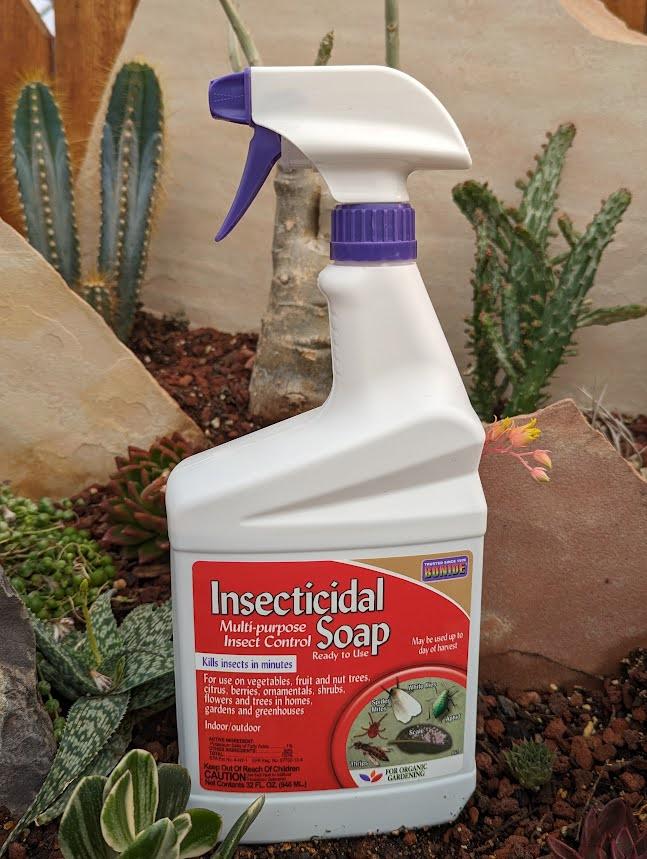
Shane says insecticidal soap will suffocate the mealybugs without damaging the succulents. He especially likes it for succulents that have “farina,” the pale white coating that serves as both a sunscreen and something of a raincoat on many succulents. Once the farina is disturbed, it can’t be replaced.
Mealybugs can also be treated with a 70% solution of isopropyl alcohol, either in a spray mist or on the end of a cotton swab. The alcohol dissolves the bugs’ waxy coating. The alcohol and cotton swab are helpful in initial infestations. The insecticidal soap may be a better approach when the mealybugs are getting out of hand.
With either product, it never hurts to test it on a few lower leaves and then wait a day or two, watching for bad reactions, before using it more extensively on the entire plant.
Shane says in his experience, aphids and spider mites, and occasionally scale, can also cause issues with succulents, but he finds mealybugs are a far more common problem. Both insecticidal soap and isopropyl alcohol can be used against those other pests, too.
And then there’s “etiolation”
No pop quiz involved, I promise, but etiolation is a real issue with succulents, and many other houseplants, too. It’s basically the technical term for plants that stretch and look leggy because they aren’t getting enough light.
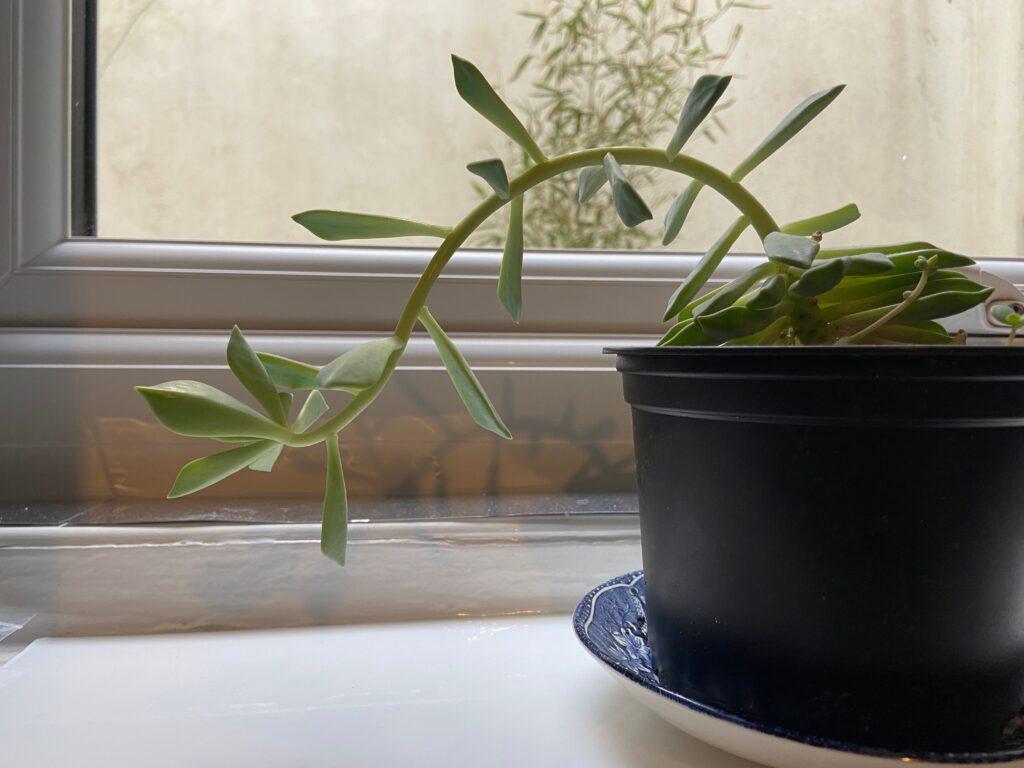
Notice how the spacing of the leaves on the plant above is tight and attractive on the lower parts of the stem. But… move that plant to an area with too little light, and the plant begins to stretch, hungry for more light, before it can gather enough energy to create another set of leaves. That’s not the attractive look that plant should have.
Most succulents will be quite happy with morning sun anytime of year, though flowering varieties might prefer a bit more during their growing season. In the winter, they can take south-and west-facing sun, too. But in the summer, those hotter exposures can actually burn many of the succulents that want bright light but are sensitive to that intensity of both light and heat.
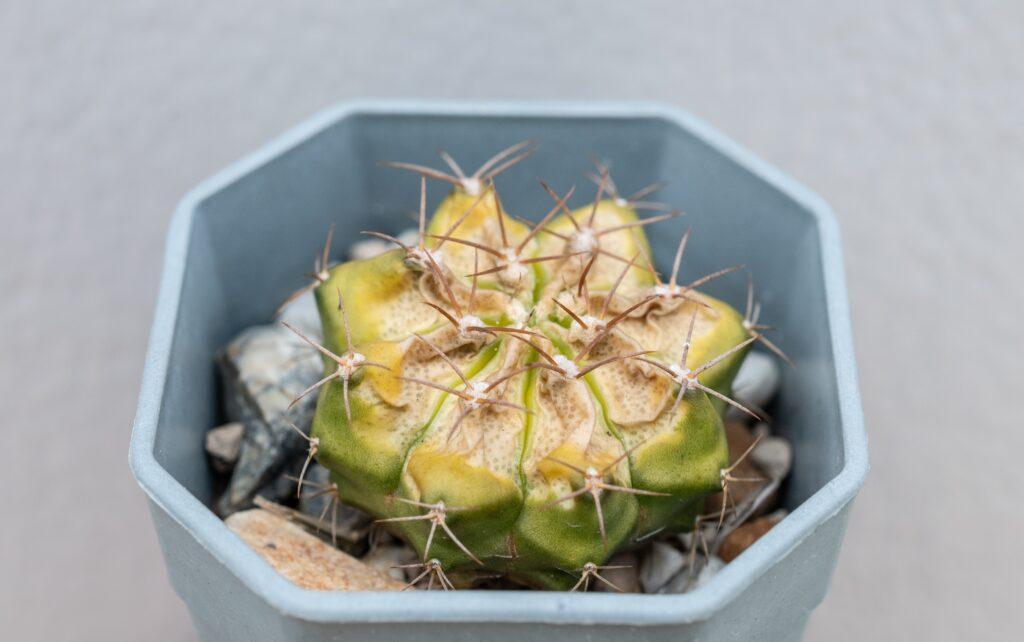
People often associate succulents with the desert, but sunburn can be a real issue with many of these plants, even with some types of cactus as shown above. Sunburn can occur with just one afternoon of too much exposure. Once that’s happened, the damaged portions of the plant will not recover.
Tagawa Gardens is ready to help!
In general, most succulents really are low-maintenance, but that doesn’t mean they’re trouble free if conditions aren’t right. Over-watering, insect issues, too little light, too much light… all of these problems can be avoided with just basic care.
If you have questions about your succulents, feel free to take some pictures with your smart phone…. a few close-up shots in good light, and then come see us. Those images can go a long way towards helping Shane, his houseplants team, or our Garden Advisors identify what’s happening. They’ll do their best to help you keep your houseplants healthy and happy. Oooops. There I go again with the “happy” plants. But you know what I mean. Hope to see you soon!
